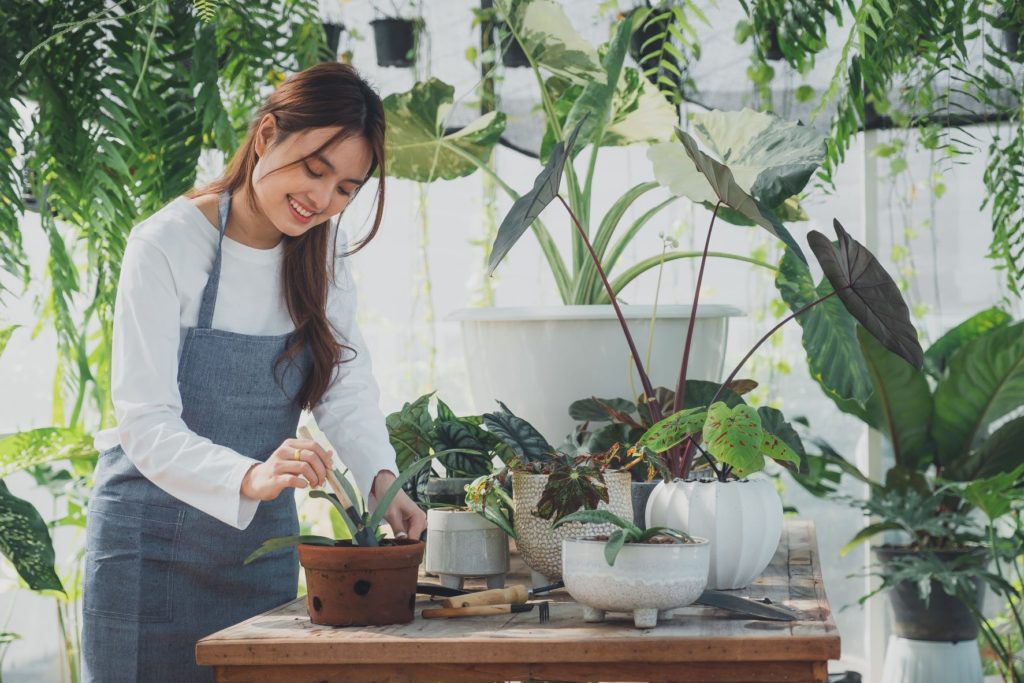How to Make a Garden at Home
There are some things you should consider when starting a garden at home. Water is the most crucial factor and should be readily available. To get water to your garden, you may need a long hose. Otherwise, watering your plants will become a chore. After the sun, the soil is the next important consideration.
Tools
There are many tools available to help you grow herbs and vegetables, or create a flowerbed. A small board and some pegs can be used to plant seeds precisely. A dibble is another useful tool. It can be used to quickly make holes for different plants.
Hand pruners, also called secateurs or pruning shears, are a useful gardening tool. They can be used to cut many different plants because they have two blades. Some hand pruners have a sharp edge that makes them ideal for gardening. Secateurs are often coated to resist rust.
A digging fork can also be useful. This tool acts as a combination of a shovel or a rake. Its tines are either straight or slightly curved, and help break down hard soil. It can also be used to scoop mulch or fertilizer. It is especially useful when you have hard soil. There are many sizes of forks, from small for container gardens to large for large vegetable gardens.
Soil test
First, you should get a soil test to make sure your soil is good for growing plants. There are many soil tests available, but the most important one is to determine the pH balance. This will help you identify soil deficiencies and provide steps to fix them. This test can be purchased in stores, or you can do it yourself with the aid of baking soda, red cabbage, or vinegar.

You should prepare one to two cups of soil for testing. For this purpose, many labs provide special bags. The bags can be filled to the line marked on them. The lab will then receive the sample. Within one week, you will receive the results from the lab. For further information, visit the soil laboratory website.
A soil test can also provide general information about the fertility and nutrients of your soil. It will also tell you if your soil is acidic or deficient in nitrogen. The kits can be used to test the soil for pH. You can also test the soil for minerals such as calcium and magnesium. This will help you determine if you have the right soil for growing plants.
Planting in raised beds or containers
The first step in creating a raised bed is to prepare the soil for planting. Fill the hole only half way with soil to get the best results. Loose soil aids roots in absorbing water. If you plan to plant plants in containers, remove the root ball first so that the roots can absorb moisture from the soil. After planting, water your garden in the morning. Pay close attention to the plant tags for more watering instructions. If you want to protect your garden from animals, consider installing a mesh cover.
Next, plan your raised beds and choose a variety. Tall plants should be placed in the center of the bed, followed by medium-sized plants on either side. The shortest plants should be placed on the outside of the bed. You can also plant herbs in raised beds. Many dishes can be enhanced with herbs.
Raised beds can vary in height from a few inches to twenty inches. To make it easier to reach the plants, the sides should be at minimum three feet in width. If you have a disability, you might want to choose a bed with higher sides so you can reach them.
Finding a sunny spot
Before you begin to plant a garden, find a sunny spot. You can do this by observing the area for a few weeks and taking note of the sun patterns and conditions. For example, the sun will be higher overhead in summer. It will be more direct in winter.
After recording the times that the sun shines in your yard, you can take pictures of the area to determine the time when the sun will be directly overhead. Also, observe the shadow patterns. Some areas are sunny in the spring or autumn, but heavily shaded in summer. Additionally, shadows can also be cast by buildings and walls.
It is important to find a sunny spot. You also need to consider the type and size of plants you are going to grow. For vegetables, the light is essential in the production of fruit and fleshy stems. Photosynthesis is how plants convert water into food. For this reason, the best locations to grow your garden are west or southwest-facing. Depending on the type of plant, you may even be able to grow vegetables in partial shade.